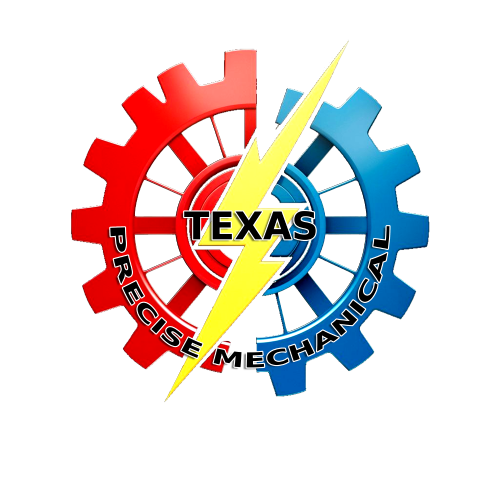Office and Workspace HVAC Services
When designing a commercial HVAC system for an office, it’s important to consider indoor air quality and energy efficiency. These factors impact employee health, productivity, and operational costs.
Indoor Air Quality and Health Implications
Indoor air quality is crucial in office environments. Poor air quality can lead to health issues for employees, such as allergies or respiratory problems. Commercial HVAC systems help manage airflow, reducing pollutants and ensuring a constant supply of fresh air.
Effective ventilation systems are key. They filter out contaminants like dust and bacteria, which helps maintain a healthier workspace. Improved air quality can boost productivity by reducing illness-related absenteeism. For example, businesses in Houston face unique challenges due to high humidity, making proper HVAC solutions essential to maintain optimal air conditions.
Energy Efficiency and Sustainable Practices
Energy efficiency in HVAC systems is vital for reducing operational costs and promoting sustainability. Efficient systems are designed to use less energy while maintaining comfort. This can be achieved through smart thermostats, energy recovery ventilation systems, and regular maintenance.
Sustainable HVAC solutions incorporate eco-friendly practices. For instance, using energy-efficient models and ensuring proper insulation can significantly lower energy usage. In office environments, automated controls can optimize settings based on occupancy patterns. These practices not only save money but also contribute to a more sustainable business model, which is increasingly important in various regions including Houston.
Optimizing Workspace Comfort and Productivity

A comfortable and well-maintained workspace boosts productivity. Effective strategies focus on temperature and humidity control, alongside regular maintenance to keep systems working efficiently.
Temperature and Humidity Control Strategies
Proper temperature and humidity levels are crucial in an office. Temperatures should typically range between 68-75°F for comfort. High temperatures may cause fatigue, while low temperatures can be distracting and uncomfortable. It’s also important to regulate humidity. Ideal humidity levels are between 30% to 50%, preventing dryness and stuffiness.
Using zoning can optimize climate control. Dividing the workspace into different zones allows for tailored temperature settings based on occupancy and usage. Spaces with high sun exposure might need more cooling, while well-insulated areas might require less.
Maintenance and Upkeep for Peak Performance
Regular maintenance of HVAC systems ensures efficiency and reliability. It’s essential to clean or replace air filters quarterly to maintain good indoor air quality. Dust and debris can clog filters, reducing airflow and introducing contaminants.
Check ventilation points to ensure they are not blocked by furniture or other items. Keeping vents clear helps maintain proper airflow. Additionally, scheduling annual inspections by professionals can catch issues early and keep the system running smoothly.
Energy-efficient HVAC systems with features like advanced controls and variable speed fans can reduce costs. These systems also minimize the environmental impact, contributing to a sustainable workspace. Regular updates to the HVAC system can ensure it remains effective and efficient.
HVAC Solutions for Modern Office Renovations

When renovating an office, it’s crucial to rethink the HVAC system to meet new needs. Traditional setups may not be effective anymore.
Open office plans are common today. They need different airflow patterns compared to cubicles. Flexible HVAC designs, such as Variable Air Volume (VAV) systems, provide individualized control, helping maintain comfort.
Lower occupancy rates post-COVID require scalable solutions. Modular HVAC units can adjust to varying demands, optimizing energy use.
Energy efficiency is a top priority. Modern systems should reduce cooling loads. High-efficiency filters and smart thermostats can significantly cut down on energy consumption.
Displacement ventilation systems are a game changer. These floor-mounted units are ideal for open spaces and can save valuable ceiling space for lighting or other uses.
Consider downsizing ductwork. Smaller, more efficient ducts improve airflow and reduce installation costs. Easy-to-maintain systems also lower long-term service expenses.
Humidity control is vital. It ensures a healthy office environment. Advanced dehumidifiers and humidifiers can help maintain optimal levels, improving air quality.
Modern offices often integrate smart technologies. IoT-enabled HVAC systems provide real-time monitoring and control, increasing efficiency and comfort.
Ensuring proper mechanical insulation is key. This reduces energy loss and keeps the HVAC system running smoothly.
Key Points:
- VAV systems for flexibility
- Modular units for scalability
- Energy-efficient features
- Displacement ventilation
- Downsized ductwork
- Advanced humidity control
- IoT-enabled systems
- Proper mechanical insulation
Adapting HVAC systems to modern office needs is not just about comfort but also energy savings and health.
[trustindex no-registration=google]
How can we help you today?
Our team is standing by and ready to help.
Text To Request Service Schedule Today: (281) 898-3773

